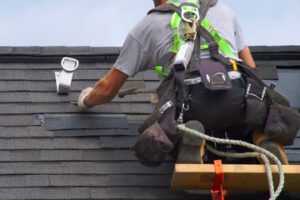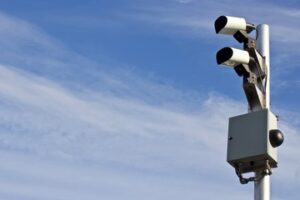The extent of roof damage determines the cost of repairs. Minor damage involving only a portion of the roof will be cheaper than extensive repairs that involve structural work or material replacement.

Look for water stains on the ceiling, as well as dampness in walls and insulation or lumber. These are indicators of a leaky roof. Visit https://www.fresnoroofingexperts.com/ to learn more.
Shingles are an attractive, durable roofing material that provides a decorative and sturdy shield from rain, wind, snow, and sun. They also add to your home’s curb appeal and boost its value. However, shingle roofs need regular repair services to maintain their integrity and functionality. Failure to do so can result in leaks, moisture intrusion, and other costly issues.
A shingles rash typically begins in a band on one side of the body and looks like red, blistery patches that resemble chickenpox. It takes 7 to 10 days for the blisters to scab over. If you have a weakened immune system (due to age, certain medical conditions, or certain medications), shingles can be serious and even life-threatening.
If left untreated, shingles can cause complications including pain in the torso or face and a headache, chills, fever, or stomach upset. For some people, shingles can lead to encephalitis or meningitis—life-threatening brain and spinal cord inflammations. Shingles can also cause permanent nerve damage, leading to facial paralysis and hearing loss.
The most common sign of a shingle roof in need of repair is the occurrence of leaks. If water seeps through the roof, it can lead to mold growth and structural damage to the house. Additionally, it can compromise the interior living space, making it uncomfortable and unsafe for residents.
To avoid these problems, homeowners should regularly inspect their shingle roofs for signs of damage. They should look for missing or curled shingles and any areas where the granules have worn off, exposing the fiberglass mat underneath. A shiny area on the bottom edge of a shingle is another indication that it’s time for a replacement.
In addition to examining your roof for damage, you should also trim back any nearby trees to prevent them from falling and damaging the shingles or the roof deck. Regular maintenance by a professional can also help you extend the lifespan of your roof. For example, a professional can apply protective coatings that guard against dry rot and insect damage. They can also replace shingles that are badly cracked or torn.
Flashing
When a roofer informs you that your house needs flashing, it might seem like they’re talking in another language. But the truth is that roof flashing is an essential part of a well-functioning roofing system, and understanding its importance will help you avoid costly repairs in the future.
Flashing is a thin sheet of metal that’s installed at points where a roof meets other structures on the building, such as chimneys, dormers, or skylights. It’s designed to prevent water from infiltrating these areas and damaging the roof. Flashing is available in a variety of materials, from plastic to more durable metals like aluminum, lead, and copper. It’s best to choose a professional roofer who has extensive experience in the installation and repair of flashing.
The most important role that flashing plays is protecting your home from water leaks. Without it, or if it’s not installed correctly, moisture can damage the interior of your home and cause mold and mildew problems. It also increases the risk of fire and can encourage pest infestation. In addition to protecting your property from water leaks, flashing will also help prolong the life of your roof.
One of the most common places where flashing is used is in the valleys of sloped roofs. These areas where two sloping sections meet are particularly vulnerable to leaks, because they’re exposed to large amounts of water and create an angle where the shingles might fail. Flashing is designed to prevent these leaks by directing water to the gutter and away from the shingle area.
Other areas where flashing is commonly found are at the ends of pipes and vents that protrude from the roof, such as plumbing vents or chimneys. These areas can often be difficult to seal with just a regular rubber roof vent cap, but flashing provides an extra layer of protection that’s much more durable than plastic or other roofing materials.
There are several different types of flashing, including base flashing, counter flashing, and apron flashing. Base flashing is a strip of metal that’s run up the edge of the roof, and it’s placed against the shingle area to create a watertight seal. Counter flashing is a piece of metal that slides under the base flashing, and it’s typically a piece of metal that’s shaped like an L. Apron flashing is also an L-shaped piece of metal that’s placed around the base of a penetration in the roof such as a chimney or dormer.
Built-up roofing (BUR)
BUR commercial roofing systems are resilient and provide additional protection to a building’s structure. They also have a long lifespan when they are regularly inspected and maintained by a trusted roofing contractor. However, even with this longevity, they can still suffer from a variety of issues. A few of the most common problems include open joints, voids and blistering.
In addition to being durable, a well-maintained BUR roof can also help you save money on energy costs. Its high reflectivity protects your building from UV rays, which reduces the need to run heating or cooling systems, lowering your energy costs. However, even if your building has a multi-ply BUR system, it’s important to have regular inspections and maintenance performed.
A yearly routine includes a visual inspection, cleaning gutters and drains, checking for water flow around protruding elements, immediate repairs on any identified damage, meticulous examination of flashings and joints, removal of vegetation and any other debris, evaluating the overall condition of the roof and inspecting the interior of your facility. A routine checkup helps prevent the need for expensive roof repairs and replacements, and can prolong your built-up roof’s life.
Since BUR is a very thick, heavy roofing system, it requires extensive structural considerations during installation or replacement. This weight may require a stronger building’s frame or supports, and a structural engineer should be consulted.
BUR is an excellent choice for historic buildings and schools, as it’s durable enough to withstand a wide variety of environmental conditions. It’s also a good option for green roofing or other sustainable roofing systems, as it can be covered with a vegetative layer.
A BUR roof can last for 30-40 years, but only if it’s properly maintained by a trusted roofing contractor. In addition to avoiding common problems like open joints, blistering and voids, proper maintenance can ensure a BUR roof is waterproof and able to withstand severe weather conditions. A BUR roof’s puncture resistance is another major advantage over other types of commercial roofing. This means that it’s less likely to experience a leaky roof from an accidental puncture, which can be costly for your business.
Insulation
Insulation is vital for a home to be comfortable, and it also plays an important role in energy efficiency. Inadequate insulation can result in high energy bills. This is because a roof that is not properly insulated will require your HVAC system to work harder to keep your top floor cool in the summer and warm in the winter. This puts a strain on your unit and shortens its lifespan.
Insulation works by trapping air or other gases in pockets or layers, which slows the movement of heat and keeps indoor temperatures stable. There are many different types of insulation available to suit a wide range of roofing needs. Some common types of insulation include blanket insulation (available in rolls or batts), cellulose, mineral wool and fiberglass. Rigid board insulation, made from materials like polystyrene or polyisocyanurate, is another type that is effective in areas with uniform spacing between joists and rafters.
Repairing or replacing damaged insulation can significantly reduce energy costs. In fact, a quality insulation job can save you up to 50% on your energy bills! It is important to note that if you are deciding between repairing or replacing your roof, it may be best to replace it as soon as possible to prevent future damage and costly repairs. This is especially true if the roof has extensive or widespread issues. It is often more cost-effective to replace a roof that has substantial damage, and a full replacement will also help to ensure that your home is safe and secure for years to come.
